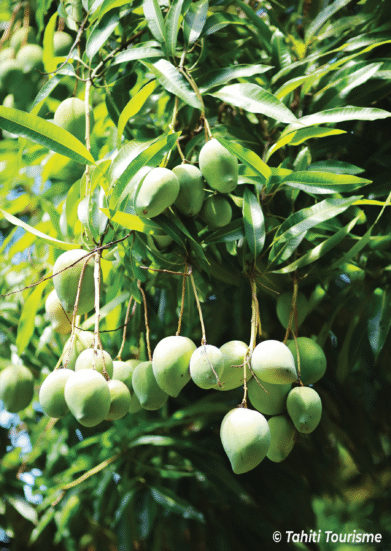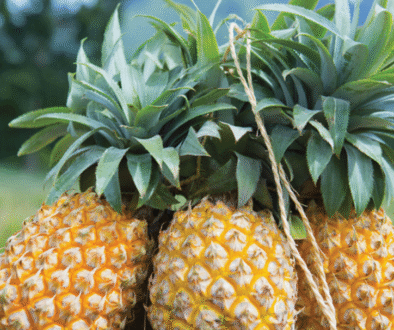
🌱 Origin and local history
Mango arrived in Polynesia with the first settlers in 1848, and has adapted perfectly to Tahiti’s tropical climate. Today, it is an integral part of the Fenua: mango trees flourish in the valleys, in allotments and often along roadsides, offering a generous abundance every season.
🌿 Benefits & virtues
Rich in vitamins A and C, fibre and carotene, mango is not only delicious but also nutritious. It is known for its digestive, antioxidant, deworming and general well-being benefits.
🥭 Varieties grown in Tahiti
Tahiti’s mango landscape is rich and diverse:
- Grafted from Tahiti or “gréffée”: a popular, yellow, non-fibrous variety with creamy flesh.
- Vī Tahiti: a traditional variety, fibrous but very fragrant, handed down from generation to generation.
- Vī popā’a: easy-to-eat variant, firm and less stringy flesh
- Ohure pio, tutehau, atoni, mission, opureva (violets)…
🗓 Season & culture
The mango season in Tahiti generally runs from August to February,the harvest peaks depending on the variety. Each garden is often home to one or more mango trees, a sign of shared abundance. The fruit is picked when ripe and simply eaten fresh.
🍽️ Tasting and recipes
Mango can be enjoyed in a thousand ways in Tahiti:
- Raw, simply sliced, or soaked in a dash of lemon or seawater (slightly immature vī tahiti)
- Homemade sorbet, coulis, jam or chutney…
- Revisited desserts, such as cheesecakes, panna cotta, tiramisu, pavlova…
- Fresh tuna and mango tartare.
🍬 Mango with chinese candy
It’s impossible to talk about mango in Tahiti without mentioning the essential Chinese candy mango, the snack of our childhood. Prepared from green mangoes, this popular recipe involves marinating the pieces of fruit in a mixture of vinegar, sugar, salt and red Chinese candy (dried plum). Sold in bags at the market, at the roadside or prepared at home, Chinese candy mangoes are often eaten chilled, straight from the fridge or an ice bath.
The mango is much more than a fruit: it carries with it the history of our gardens, the energy of Fenua and the taste of childhood. It can be picked, shared and transformed, but above all it can be enjoyed from the heart.


